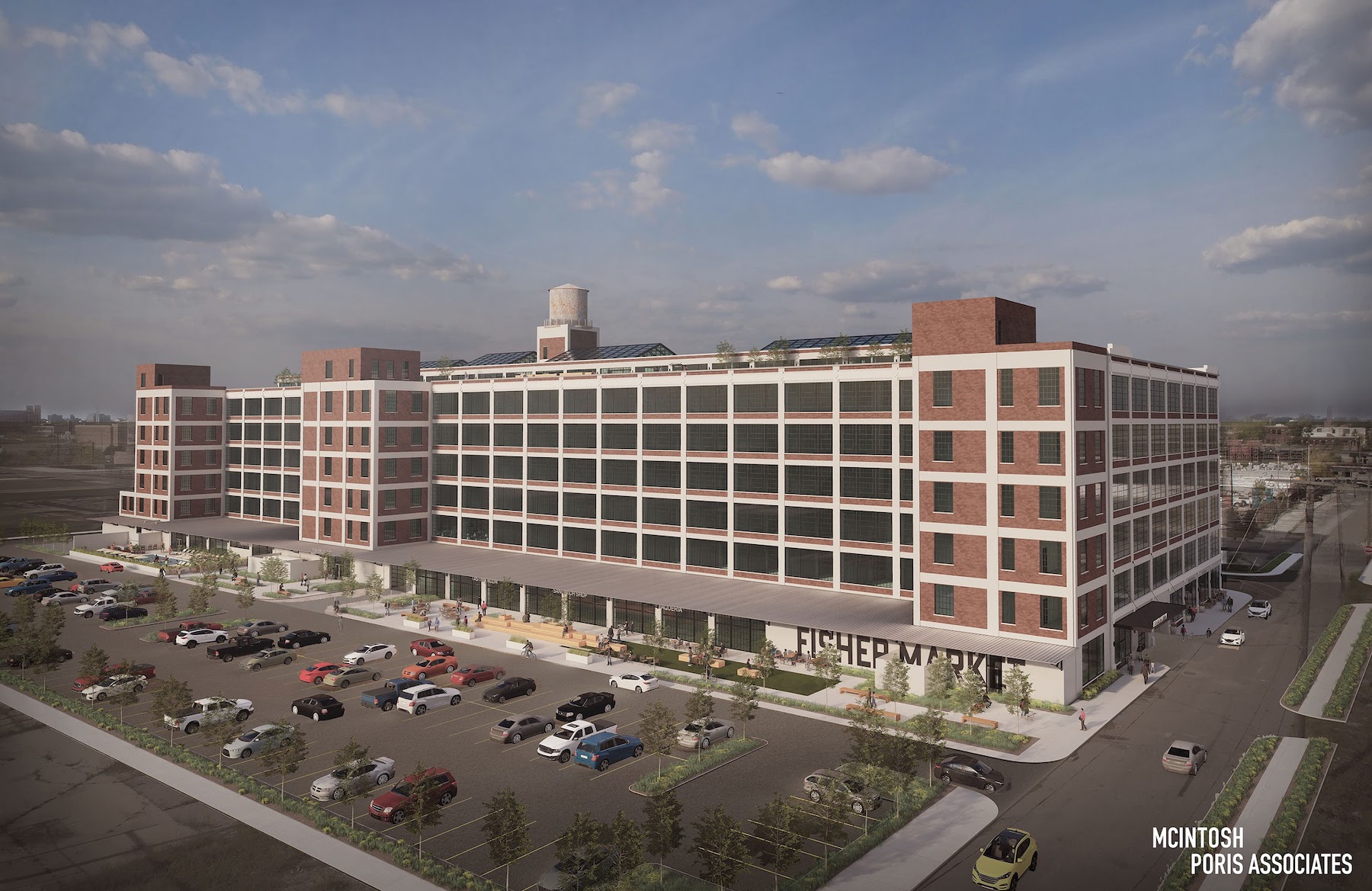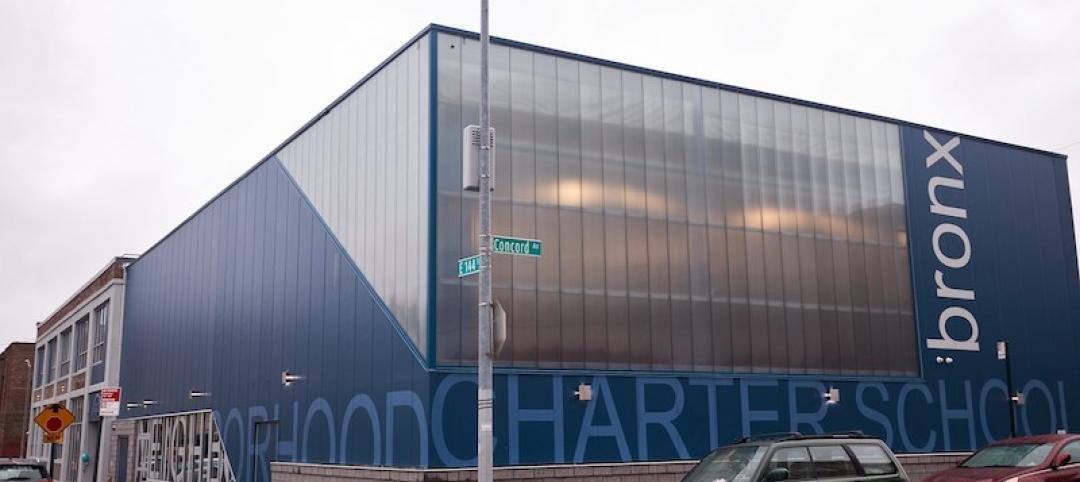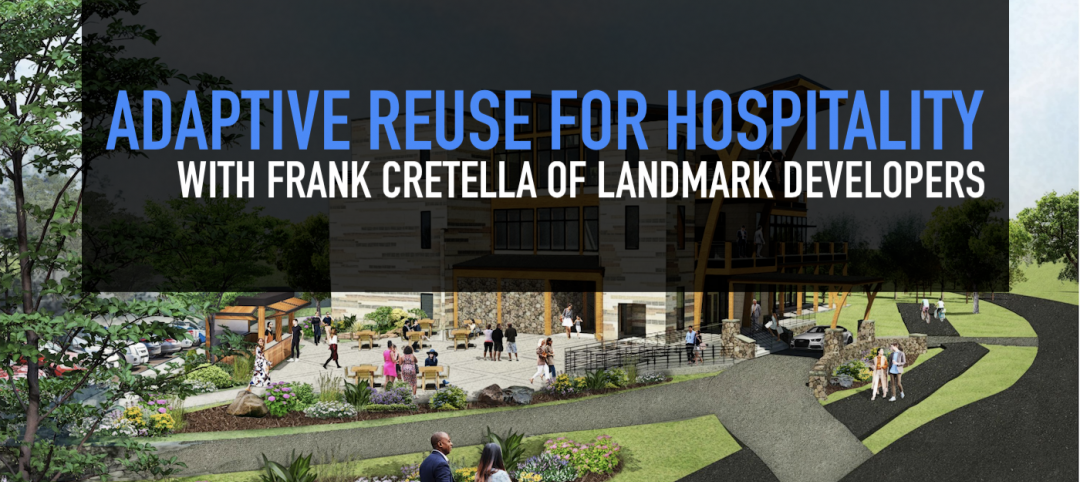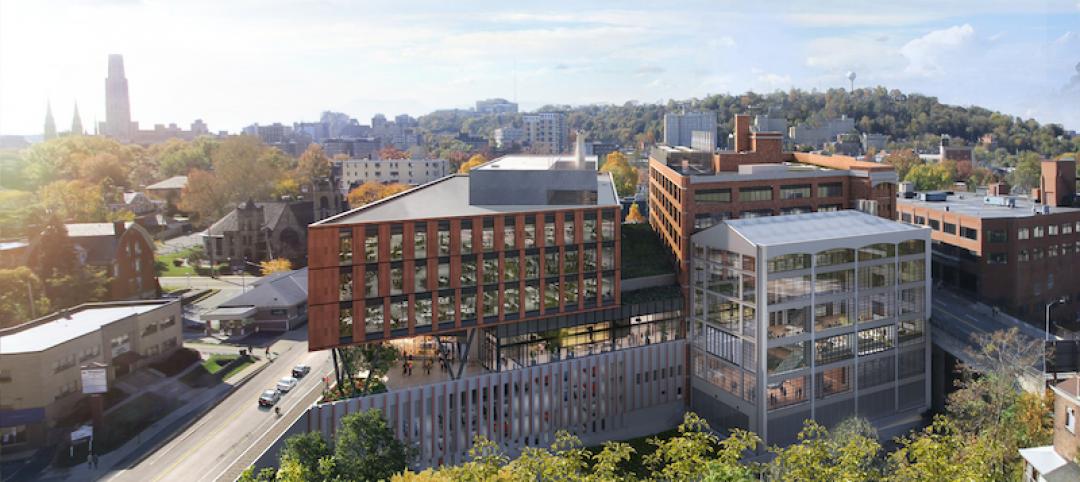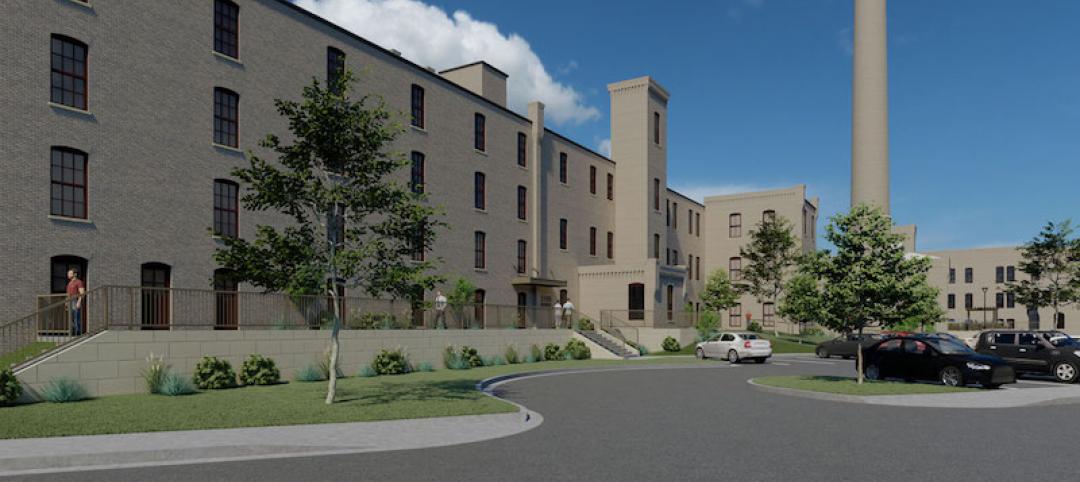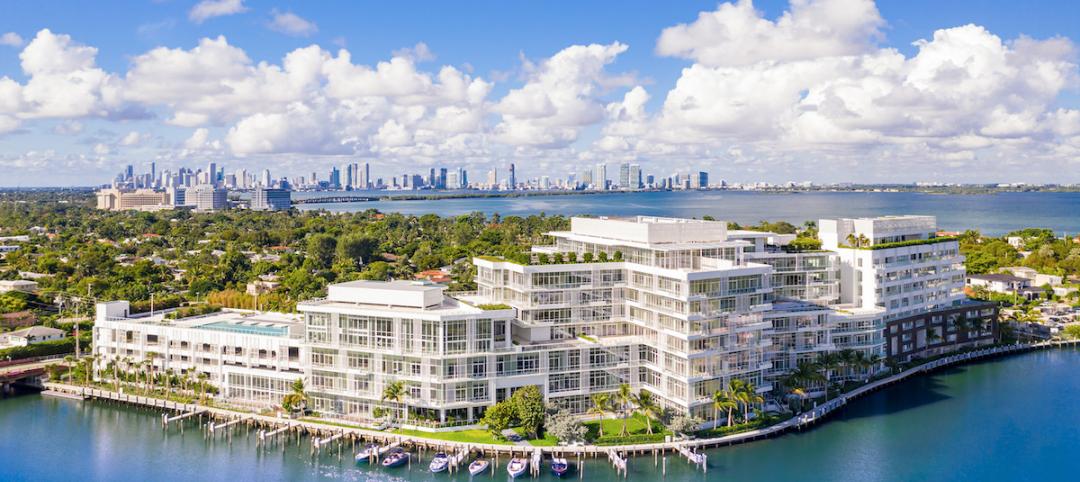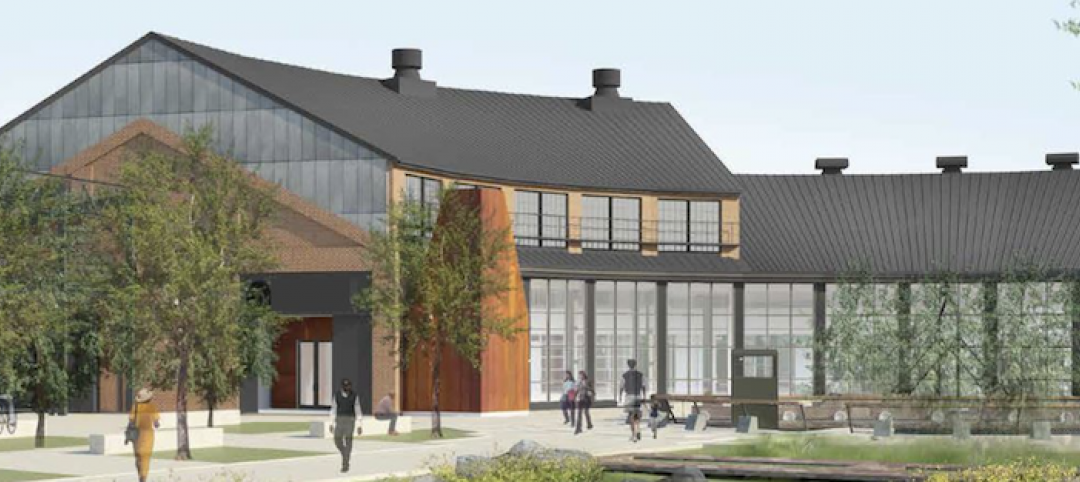Fisher Body was an automobile coachbuilder founded in 1908. Its 21st plant, a six-story 600,000-sf factory in Detroit that produced car chassis, was said to be one of Motor City’s first poured-concrete buildings. General Motors purchased the plant in 1926 and made Cadillacs and Buicks there through 1984. The plant then went from being occupied by paint manufacturers for nearly a decade, to abandonment until the city of Detroit took ownership of the graffiti-strewn structure in 2000.
The building seemed destined for demolition—especially after a fire in 2014 damaged part of the plant—until two local developers Greg Jackson and Richard Hosey, and the architecture, interiors, and planning firm McIntosh Poris Associates, came up with a mixed-use design alternative that will reuse the plant for housing.
Fisher 21 Lofts, as the repurposed site is called, will have 433 apartments, one-fifth of which designated as affordable. McIntosh Poris’ design features three skylight-capped atria with courtyards, 28,000 sf of restaurants and retail, and 15,000 sf of coworking office space on the ground and second floor levels. The ground floor will also offer an outdoor pool terrace on the building’s south side.

PRESERVING HISTORY
The building’s façade will receive a full historic preservation, with all window openings being retained as originally designed and the windows themselves being replaced. Existing masonry will be cleaned and restored. The building’s signature water tower with be retained, and its existing penthouse transformed into a clubhouse and fitness center.
Fisher 21 Lofts’ amenities include a two-acre roof with a lounge, dog park and spa, and a quarter-mile walking track with views of Detroit’s skyline.
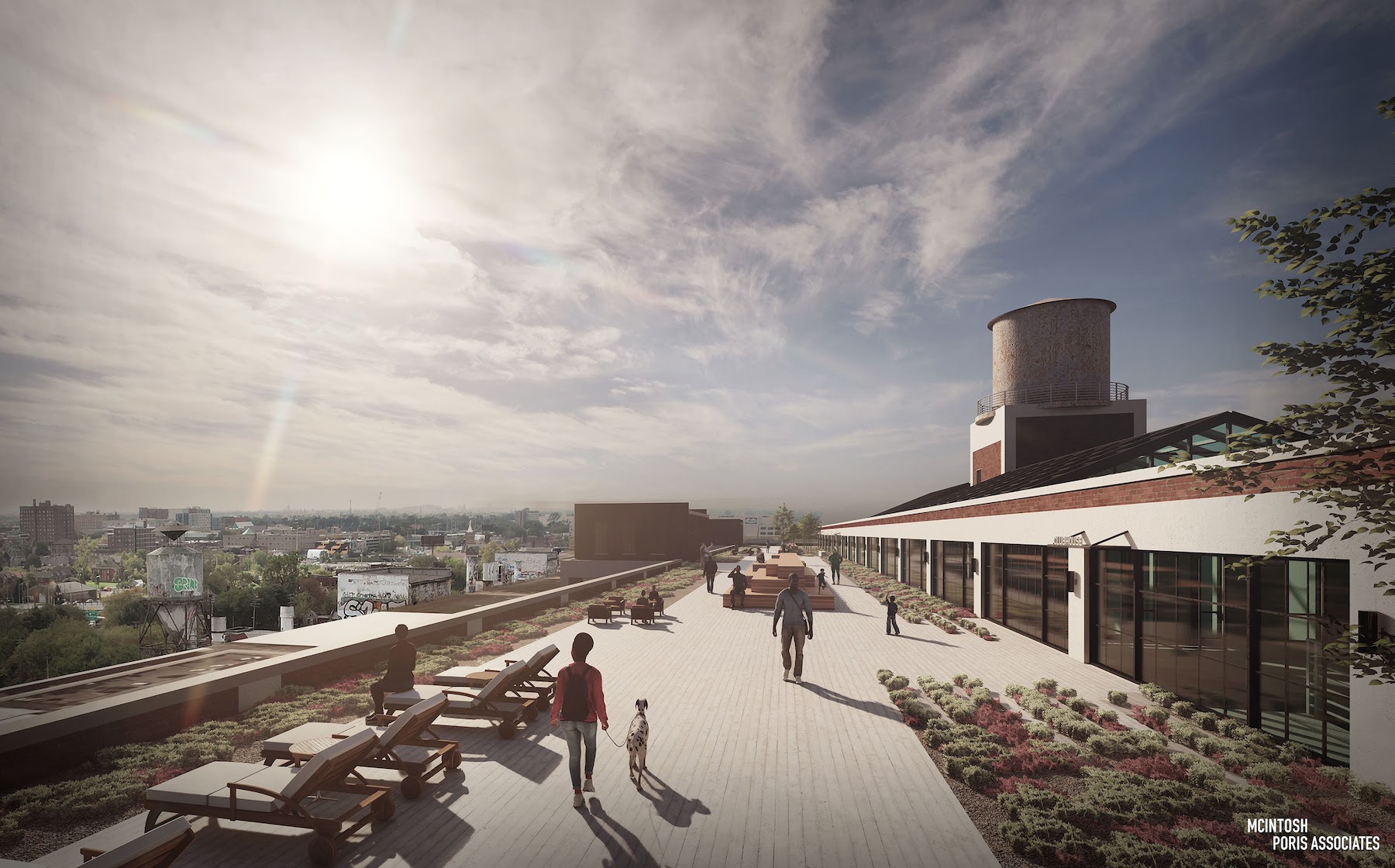
The lofts’ construction is expected to start later this year, and should be ready for occupancy by 2025. The project’s building team includes Lewand Building Companies (CM), Kidorf Preservation Consulting (historic tax-credit consultant), Mannik Smith Group (CE, landscape architect), Applied Environmental (environmental engineer), ETS Engineering (EE), Sellinger Associates (M/P engineer), IMEG (SE), Capture It (3D scanning), and Amy Baker Architect (spec writing).
This $134 million adaptive reuse is believed to be the largest minority-led development in Detroit’s history, teaming Jackson Asset Management, Hosey Development, and Lewand Development. The Detroit Free Press reported that the developers acquired the building for less than $1 million, and that it would have cost the city between $5 million and $10 million to tear down the building.
Related Stories
Adaptive Reuse | Aug 25, 2021
The first net-zero hotel in the U.S. is nearing completion in Connecticut
Solar arrays will provide the electricity for the Hotel Marcel, whose name recalls the building’s original designer.
Adaptive Reuse | Aug 13, 2021
Developers are repositioning vacant space as charter schools
Transwestern is working with the National Alliance of Public Charter Schools to provide a turnkey solution.
Hotel Facilities | Jun 18, 2021
Adaptive reuse for hospitality, with Frank Cretella of Landmark Developers
In an exclusive interview for HorizonTV, Landmark Developers' President Frank Cretella talks about the firm's adaptive reuse projects for the hospitality sector. Cretella outlines his company's keys to success in hospitality development, including finding unique properties and creating memorable spaces.
Adaptive Reuse | Jun 2, 2021
An old Ford factory in Pittsburgh is being adapted to become a biomedical research facility
This is the latest step in the city’s post-industrial resurgence.
Adaptive Reuse | Apr 15, 2021
The Weekly Show, Apr 15, 2021: The ins and outs of adaptive reuse, and sensors for real-time construction monitoring
This week on The Weekly show, BD+C editors speak with AEC industry leaders from PBDW Architects and Wohlsen Construction about what makes adaptive reuse projects successful, and sensors for real-time monitoring of concrete construction.
Adaptive Reuse | Feb 24, 2021
Adaptive reuse project brings co-living space to Los Angeles’s Hancock Park
Lorcan O’Herlihy Architects is designing the project.
Adaptive Reuse | Feb 14, 2021
Three adaptive reuse projects will add housing in Wisconsin
Historic tax credits helped pave the way, but preservation required creative solutions.
Multifamily Housing | Jan 20, 2021
Abandoned Miami hospital gets third life as waterfront condo development
The 1920s King Cole Hotel becomes the Ritz-Carlton Residences Miami in the largest residential adaptive reuse project in South Florida.
Adaptive Reuse | Dec 17, 2020
A train engine repair building is turned into an innovation center that’s part of a massive riverfront redevelopment in Pittsburgh
The adaptive reuse of the Roundhouse is the latest step forward for Hazelwood Green.
Adaptive Reuse | Oct 26, 2020
Mall property redevelopments could result in dramatic property value drops
Retail conversions to fulfillment centers, apartments, schools, or medical offices could cut values 60% to 90%.


